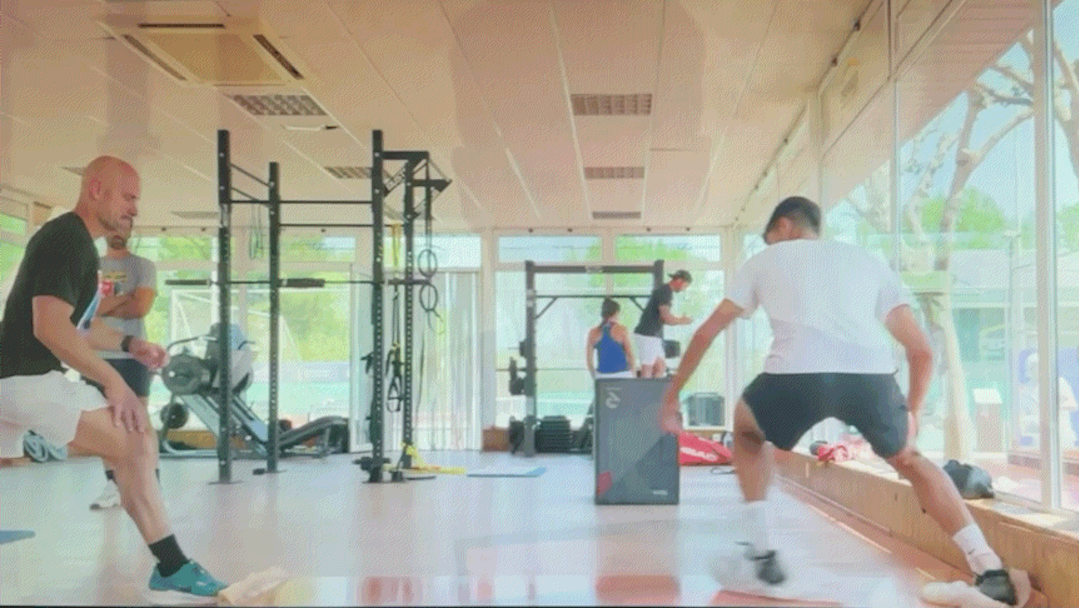For the past three months, this site’s weekly “Training Topic” has focused on a technique that appeared in the new Netflix docuseries “Break Point.” I anticipated that this would provide a few weeks of content. That has proven to be a significant underestimate. There is a possibility that this theme could run through the end of the year.
Today we are moving into Season 1 Episode 3. During the opening montage of the BNP Paribas at Indian Wells, a player is seen performing partner-assisted resistance band sprints. I am 90% sure that it is Elina Svitolina, though her face is never shown in the brief glimpse.
Resistance band sprints are good for tennis training for several reasons. First and foremost, the exercise supports speed and agility. The resistance adds an extra challenge to the sprinting motion, forcing the muscles to work harder and generate more power. This type of training can enhance a player’s ability to move quickly and change direction efficiently during a match.
In addition to speed and agility, resistance bands layer in the development of power and explosiveness, which are required for that decisive first step toward the ball. Along those lines, it is also good for strength in the leg muscles, which is essential for generating power on groundstrokes and serves.
One of the most underappreciated aspects of tennis is that deceleration is just as important as acceleration. Getting into a good hitting position requires stabilizing the body following rapid movement. Resistance bands fine-tune the muscles responsible for stopping quickly and changing direction.
It looks like Svitolina is performing partner-assisted resistance band sprints. A variation of this exercise can be performed using an anchored band which is useful when training without a partner. Svitolina uses a superband for resistance in this instance. That is a training aid that every tennis player should consider adding to their home fitness inventory.
Resistance band sprints are performed by anchoring the superband to a stationary object or by having a training partner firmly hold the band behind the trainee’s back. The band is looped around the waist. Starting from a point of gentle resistance, the player then sprints forward a few steps.
Sometimes I do this exercise by sprinting forward as far as I can before backing up to the original starting position. Another variation is sprinting to moderate tension and then running in place for 35 seconds intervals. Long-time readers of this blog know that I gravitate to 35 seconds because that is the average length of a point in tennis.
I have found that this exercise is a great way to “sprint” within my limited space in my compact home gym. Additionally, it is a relatively low-impact way to work on leg strength with cardio as I continue to recover from my foot injury last year.
Resistance Band Sprints are an exercise that every tennis player should consider adding to their training routine.
 | Resistance Band Exercise Loop Cords – by FILA |



